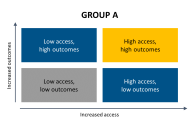You have /5 articles left.
Sign up for a free account or log in.

Slack stopped working the morning of our first day of 2021 remote academia. As I write these words, Slack is back.
As we never think about what we have until it is gone (if briefly), what does the Slack outage say about the place we now find ourselves?
For some of us, Slack is inextricably paired with the pandemic. Some parts of academia used digital collaboration platforms like Zoom, Teams and Slack before COVID-19. What has changed is that these platforms have now become the way we meet, exchange information and stay connected.
Zoom might be more campus universal than Slack, but I gotta believe that Slack use across higher ed has seriously grown in the last nine months. The pending $27.7 billion acquisition of Slack by Salesforce gives one indication of this digital collaboration tool's trajectory.
What might we learn from Monday's Slack outage?
We know -- or at least I know -- surprisingly little about how Slack is being used in higher ed. Monday's outage may be a wake-up call to figure this out.
According to the Slack page Your Guide to Slack for Higher Education, "over 3,000 higher education institutions, totaling approximately 1.2 million users, are using Slack to keep classes and campus affairs running online."
That Slack page recommends four academic uses of Slack, including:
- Digitizing the learning experience: Use Slack + Zoom to host virtual lectures and office hours
- Running a connected campus: Set up channels for student government, clubs and activities
- Managing administrative and academic operations: Maintain student affairs and services
- Partnering with outside organizations: Share channels with researchers, partners and collaborators
My guess -- and it would be good to nail this down -- is that Slack is utilized much heavily in higher education for administrative than academic use. In other words, I think (but am not sure) that Slack is used more by staff than faculty and more by administrative units (IT, library, CTLs, etc.) than academic departments. While some professors are using Slack in some courses, the platform's use for teaching and learning is relatively small compared to the LMS and Zoom.
Having some real data to test these guesses would be great.
On the staff side of the house (where I live), we seemed to have survived our Slackless Monday morning quite well. Slack has not appeared to have replaced email but instead acts as an email complement.
We seem to use Slack to communicate messages that are a) less time-sensitive, b) don't require an immediate response and c) are often more about information sharing than tied to specific tasks.
For some, having to check both Slack and email is annoying. Slack is yet another place to go.
For most of us in higher ed, my sense is that COVID-19 has taught us how to use Slack effectively. Slack takes us out of email for information sharing within a team and around projects and tasks. The sort of information we would share in meetings, hallways and informal face-to-face conversations is better communicated (and preserved) in Slack than in email.
What Monday's Slack outage demonstrates is that as much as we'd rather be back on campus at the start of 2021, we do have some resiliency in communications. Slack goes down. We go to email. If email went down, we could have gone to Slack. If Zoom went down, we could share information on Slack or email.
Having Slack go down also shows the benefits of a diverse communications ecosystem. We should never consolidate on a single platform, as technology will always fail.
Are we doing enough to build resiliency into the platforms we use to ensure academic continuity? If the LMS goes down, how do courses continue? If Zoom goes down, how do synchronous classes keep meeting? If Google Docs goes down, how do students keep collaborating?
Each outage of a major platform that is utilized by higher ed is a reminder that things fail. It is up to us to have a Plan B.
Please let us know how you are using Slack and what the impact was on your work when Slack went down.








